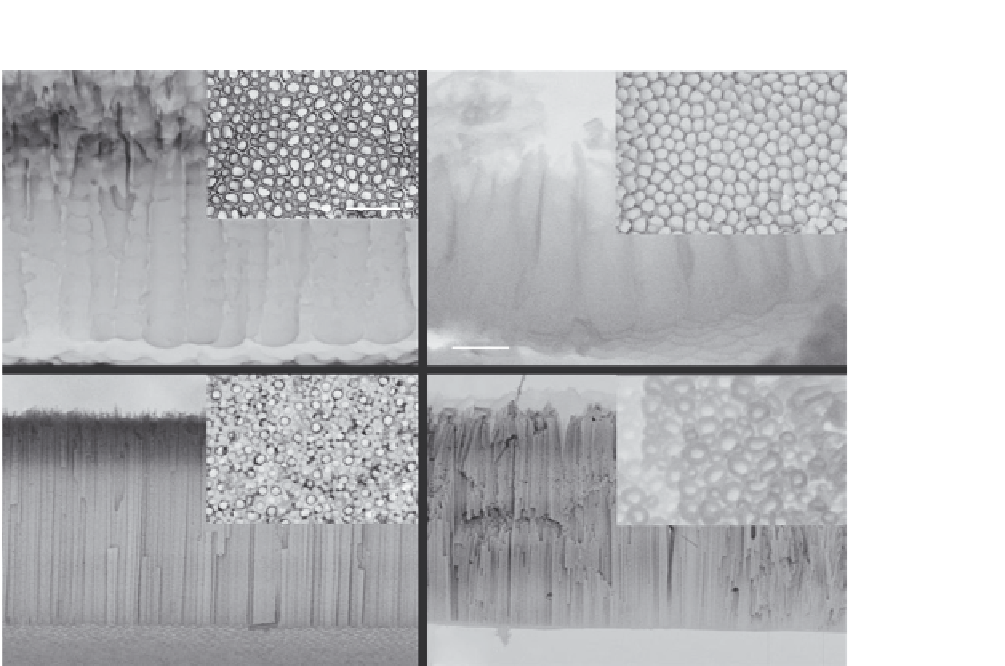Biomedical Engineering Reference
In-Depth Information
(B)
(A)
200 nm
200 nm
200 nm
200 nm
(C)
(D)
200 nm
200 nm
1
µ
M
2
µ
M
FIGURE 7.3
SEM images showing self-organized oxide nanotube layers grown on Ti-6Al-7Nb alloy (A), Ti-Al
intermetallic compound (B), TiNb alloy (C) and TiZr alloy (D) by anodization in fluoride containing
(NH
4
)
2
SO
4
electrolytes. The insets show top views of the nanotube layers
[11]
.
on these nanotubes, which may serve as carriers of osteogenic growth factors like bone morphoge-
netic protein-2 (BMP-2).
BMP-2 plays an important role in the formation of bone and recombinant human protein
(rhBMP-2) is currently available for orthopedic use in the United States
[38]
. A recent study has
shown that TiO
2
nanotubes functionalized with BMP-2 increases osteoblast adhesion
[39]
. Although
BMP-2 is a potent osteoinductive growth factor, it is expensive. Such an approach has shown that
TiO
2
nanotubes can be potentially used as a carrier for a wider range of inexpensive osteoinductive
growth factors for implant applications in future. The most frequently used bioadhesive peptide motif
is the arginine-glycine-aspartic acid (RGD) sequence which mediates bone cell attachment to several
extracellular matrix proteins like fibronectin, vitronectin, bone sialoprotein, and osteopontin. RGD
plays an important role in regulating cell migration, adhesion, spreading, and differentiation. TiO
2
nanotubes can be potentially used as carriers for such bioadhesive motifs. The delivery of such bio-
active molecules from these nanoscale structures will closely mimic the natural bone architecture and
would therefore stimulate osteoblast response and enhance osseointegration.


